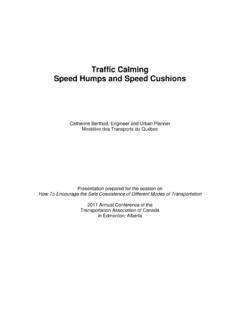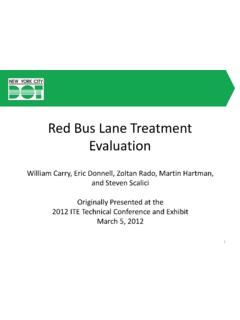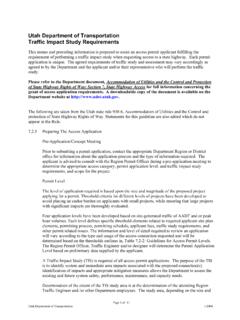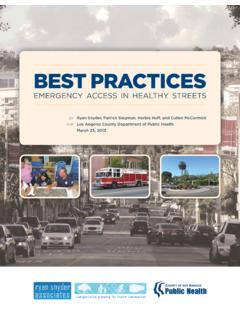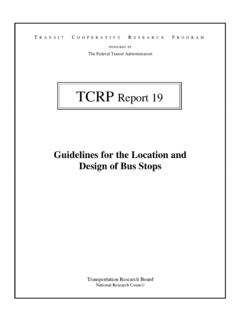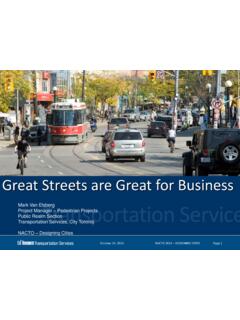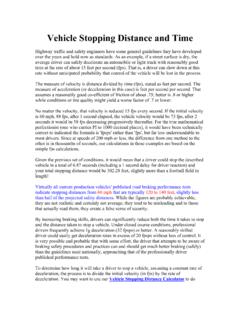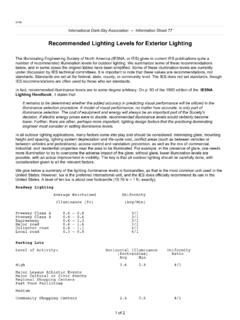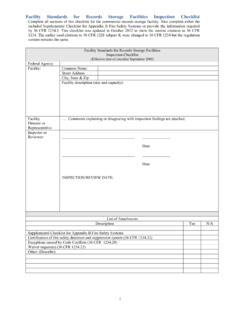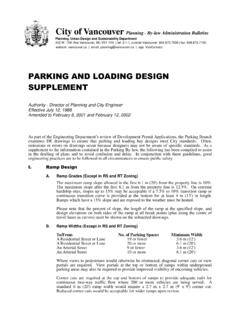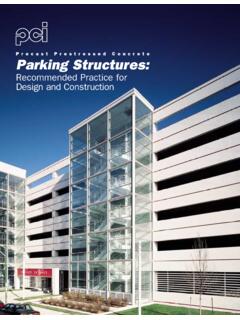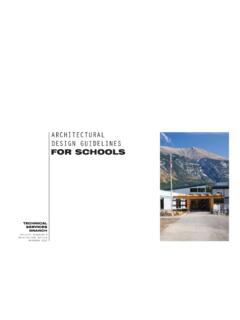Transcription of Urban Roadway Classification
1 Urban Roadway Classification Before the Design Begins GERRY FORBES. Senior Manager Synectics Transportation Consultants, Inc. 36 Hiscott Street, Second Floor St. Catharines, Ontario, Canada ABSTRACT. Road classification systems are the basis for defining function and, in turn, the design criteria for the world's street networks. The traditional classification systems have been based on the mobility and access functions of roads for motor vehicle traffic. Other road users and road uses have been largely ignored in this important step of the road design process.
2 This article describes alternative classification systems developed by the American Association of Architects, the Province of Ontario, Metro Portland, and the Region of Hamilton-Wentworth. INTRODUCTION. Roadway design practices are inextricably linked to the purpose of the road as defined by the functional classification system. However, the traditional functional classification system (1, 2) considers the road to be strictly a transportation corridor for motorized vehicles. Streets and roads, particularly in an Urban area, are multi-modal transportation corridors and serve more functions than that of mobility and access.
3 Streets are public places: places to gather, socialize, window shop, people watch, etc. An alternative classification system for Urban and downtown streets is necessary to better integrate the road, and its design, into the Urban fabric. Alternative classification systems that take into account the variety of functions and users of the road allowance have been developed. This paper outlines the shortcomings of the traditional classification system and describes alternative classification systems developed by the American Institute of Architects, the Province of Ontario, Metro Portland and the Region of Hamilton- Wentworth.
4 THE TRADITIONAL FUNCTIONAL CLASSIFICATION SYSTEM. The traditional functional classification system (FCS) has become the predominant method of transportation professionals for grouping roads. It was originally developed by transportation planners as a method of communicating the road's character of service. In its most basic form the FCS articulates information about the roads setting ( , Urban or rural) and the extent to which it provides access to adjacent land and travel mobility. B-6 / 1. B-6 / 2 TRB Circular E-C019: Urban Street Symposium TABLE 1 The Traditional Functional Classification System Classification Location Characteristics Trip lengths for statewide or interstate travel.
5 Integrated movement generally without stub connections. Accommodates Rural movement between (virtually) all Urban areas with pop. 50,000. Two design types: freeways and other principal arterials. Principal Arterial Serves major centers of activity with the highest traffic volumes and longest trip lengths. Integrated internally and between major Urban rural connections. Service to abutting lands is subordinate to travel service to major traffic movements. Design types are interstate, other freeways and other principal arterials. Links cities, large towns and other traffic generators attracting traffic over long distances.
6 Integrated interstate and intercounty Rural service. Designs should be expected to provide for relatively high speeds and minimum interference to through movements. Minor Arterial Trips of moderate length at a lower level of mobility than principal arterials. Some emphasis on land access. May carry local bus Urban routes and provide intracommunity continuity but does not penetrate neighbourhoods. Serve intracounty travel with travel distances shorter than on Rural arterial system. More moderate speeds. Divided into major and minor system. Collector Provides both land access and traffic circulation within all areas.
7 Penetrates neighbourhoods and communities collecting and Urban distributing traffic between neighbourhoods and the arterial streets. Local roads primarily provide access to adjacent land and the Rural collector network. Travel is over short distances. Local Primarily permits direct land access and connections to the Urban higher order streets. Lowest level of mobility. Through traffic is usually deliberately discouraged. The complete functional classification system has been developed around the hierarchy of movements: main movement, transition, distribution, collection, access and termination.
8 It is shown in Table 1. The two main shortcomings of the FCS in an Urban environment are that it does not consider other modes of transportation and does not consider Roadway functions outside of access and mobility. For the remainder of this paper, other modes will be considered as road users and other functions as road uses.. With respect to the lack of consideration of other road users, it is arguable that the hierarchy of movements on which the FCS is based is equally applicable to walking, cycling, public transit and the private motor vehicle.
9 However, the facilities that would serve main movement for a motor vehicle are significantly different than the facilities serving the main movement for pedestrians. Generally speaking, the movement of motor vehicle traffic requires a smooth, direct and uninterrupted route and little in the way of amenities. In fact, clear zones at the side of the road are preferable for safety and convenience. The movement of pedestrian traffic is influenced much more by comfort.. In order to create a main movement facility for the pedestrian, smooth, direct and uninterrupted routes are still desirable, but the provision of substantial roadside amenities ( , benches and trees) is also desirable.
10 Access and movement are the two functions served by streets under the FCS. In Urban environments, these are but two of many uses of the Roadway . The reality is that some roadways are used for purposes such as socializing, window-shopping, people- Forbes B-6 / 3. watching, road hockey and stick ball. Transportation professionals need to be cognizant of these other road uses and, where appropriate, incorporate design features into the Roadway that will make the movement of motor vehicles (no matter what stage of the trip). compatible with these uses.

